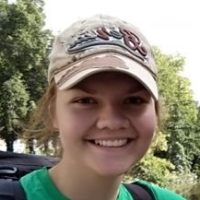About me
During my Masters project at the University of Sheffield, I worked on crystallizing the TssK component of the bacterial type VI secretion system from Burkholderia pseudomallei with the aim of obtaining a 3D structure by X-ray crystalloraphy that would enable us to better understand the mechanism of action of that secretion system. The work with X-ray crystallography got me interested in structural biology, which is why I started looking into PhD projects with a structural component. I chose my current one based on the range of techniques that I’d be employing for the protein work and the fact that it would make a real impact for understanding how the structure of hnRNPU and hnRNPUL1 proteins relates to their function and how that is affected in patients with neurodegenerative diseases carrying mutant forms of the proteins.
My project
hnRNPs (heterogeneous nuclear RiboNuclear proteins) are very abundant and diverse nuclear proteins, involved in all steps of RNA processing. One member of this family, hnRNP-UL1 (U-like 1), is structurally related to the nuclear matrix protein hnRNP-U, but possesses an additional prion-like sequence at the C-terminus. hnRNP-UL1 mutations have been discovered in patients suffering from the motor neuron disease ALS (amyotrophic lateral sclerosis), with no defects in any other ALS-causative factors. However, very little is known about the normal function of hnRNP-UL1.
Duing my project, I will carry out a biochemical characterisation of the protein, with an emphasis on its nucleotide-binding domain, in both wild-type and mutant variants. I will also express both hnNRPU/UL1 proteins in insect cells using a baculovirus vector and use them for structural studies with Cryo-EM in combination with known protein interactors such as Fus and/or 7SK snRNP and DNA scaffolds. This work will hopefully provide more understanding about the normal roles of these proteins and how those are affected in ALS.
Connect
Twitter: @CArme_N_
LinkedIn: not yet available

